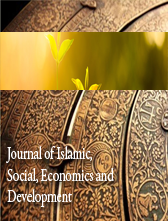PRESERVING HERITAGE AND ENHANCING VISITOR EXPERIENCE: AN ANALYSIS OF VISITOR IMPACT MANAGEMENT (VIM) PRACTICES AT IPOH HERITAGE TRAIL
Abstract
Heritage trails are designated trails that connect major significant pieces of a historical area. It is advertised to attract tourists for educational purposes and ultimately, boost the economic sector of the area. However, the local government may design, build and manage the range of the heritage trail settings, but it is always dependent on how tourists utilize the trails and achieve the intended advantages. The aim of this study is to determine the effects of visitor impact management practices (VIM) on visitors’ experiences and satisfaction concerning heritage conservation in Ipoh Heritage Trail, Perak and how the information obtained could be utilized for the purpose of heritage conservation. For this purpose, researchers have discovered two attributes for visitors’ satisfaction which are facilities (FA) and human environment (HE) followed by visitors’ experience involving four main attributes which are environmental impacts (ENI), socio-cultural impacts (SCI), visitor education (VE) and existing visitor impact management (VIM). All attributes were measured using the socio-economic profile of visitors. The study found that VIM is positively correlated with attributes measured in visitors’ satisfaction and visitors’ experiences. However, heritage settings could be improved to implement the sustainability of heritage tourism settings to promote heritage conservation while still enhancing visitors’ experiences. This study provides insightful data and information on the heritage tourism setting especially in the planning of heritage trails to be taken into consideration in the decision-making process for heritage tourism.













